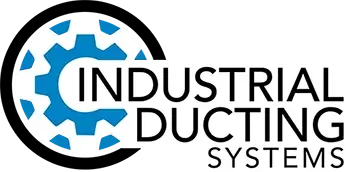Metal Product Manufacturing Ducting Solutions
Metal product manufacturing encompasses a broad range of operations including machining, grinding, welding, cutting, forming, and finishing processes. These operations generate diverse airborne contaminants including metallic dusts, welding fumes, cutting fluids, and chemical vapors from surface treatments. The industry faces increasing regulatory pressure regarding exposure to hexavalent chromium, manganese, and other hazardous metals.
Modern metal fabrication has evolved toward higher-speed machining, advanced alloys, and automated production systems that can generate significantly higher contaminant concentrations than traditional processes. Laser cutting, plasma cutting, and waterjet operations create unique emission characteristics requiring specialized capture systems. Additionally, the trend toward lean manufacturing has increased production density, intensifying air quality challenges.
The industry must balance aggressive production schedules with comprehensive air quality management, as metalworking operations often involve continuous processes that cannot be easily interrupted for system maintenance. Worker exposure to metallic fumes and particles can result in serious health effects including metal fume fever, respiratory sensitization, and increased cancer risk.
Specific Air Quality Requirements & Regulations
Metal product manufacturers must comply with multiple OSHA standards addressing specific metal exposures. The hexavalent chromium standard (29 CFR 1910.1026) establishes a permissible exposure limit of 5 micrograms per cubic meter and requires comprehensive exposure monitoring and control programs. Welding operations must comply with 29 CFR 1910.252, mandating local exhaust ventilation for enclosed spaces and specific materials.
OSHA's lead standard (29 CFR 1910.1025) applies to operations involving lead-containing materials, establishing a permissible exposure limit of 50 micrograms per cubic meter. The manganese standard addresses exposure during welding of manganese-containing alloys, requiring enhanced ventilation controls and medical surveillance.
EPA regulations under the Clean Air Act regulate metal air toxics emissions, particularly for facilities using chromium, nickel, and other hazardous metals. Many facilities operate under Title V permits that strictly limit emissions and require continuous monitoring.
Temperature considerations are significant in metal fabrication. Welding operations can generate localized temperatures exceeding 2000°F, while heat treatment processes may require 1500-2000°F. Cutting operations using plasma or laser systems create intense heat that can damage standard ductwork materials if not properly designed.
Construction Process & System Design Considerations
Metal fabrication facilities require sophisticated ventilation systems addressing multiple emission sources with varying capture requirements. Welding operations require flexible positioning systems that can accommodate complex workpiece geometries, while machining operations need fixed capture systems designed for specific equipment configurations.
The construction process must carefully coordinate with production schedules, as metal fabrication often involves continuous or semi-continuous operations. Temporary ventilation systems may be required during construction to maintain worker safety and production requirements. Phased installation approaches are common to maintain production continuity.
Ductwork design must accommodate the three-dimensional nature of metal fabrication operations, with workstations at various elevations and orientations. Flexible connections are essential for welding operations, while rigid ducting is preferred for fixed machining equipment. Spark arrestors and flame barriers may be required for hot work operations.
Explosion prevention measures may be necessary for operations generating combustible metal dusts, particularly aluminum, magnesium, and titanium. These systems require specialized design considerations that may include explosion vents, suppression systems, and isolation valves.
Technical Specifications & Performance Requirements
Metal fabrication ventilation systems typically require 100,000 to 1,000,000 CFM depending on facility size and production volume. Individual capture systems range from 1,000 CFM for small welding stations to 10,000+ CFM for large machining centers or plasma cutting tables.
Ductwork materials must withstand high temperatures and potential spark exposure. Stainless steel is preferred for high-temperature applications and corrosive environments, while galvanized steel with spark-resistant coatings may be suitable for lower-temperature operations. Flexible ducting for welding applications must be rated for high temperatures and spark resistance.
Transport velocities must be sufficient to prevent particle settling while accommodating the varying densities of different metal particles. Typical design velocities range from 3,500-4,500 FPM for main lines carrying metal dust and up to 2,000 FPM for welding fume collection systems.
Static pressure requirements vary significantly based on filtration needs, typically ranging from 15-25 inches of water column for systems with high-efficiency cartridge filters. Explosion prevention systems may require additional pressure capabilities and specialized venting arrangements.
How Industrial Ducting Systems Delivers Solutions
Industrial Ducting Systems specializes in the complex requirements of metal product manufacturing, providing comprehensive solutions for welding fume extraction, machining dust collection, and general facility ventilation. Our expertise addresses the diverse regulatory requirements across different metal processing operations.
Our 2D CAD design services provide detailed system layouts that integrate with your facility's production equipment and workflow patterns.
Our material expertise ensures proper selection of high-temperature and spark-resistant components for demanding metal fabrication environments. We provide comprehensive quantity take-offs that account for specialized materials and safety equipment required for metal processing applications.
Our logistics coordination addresses the unique challenges of metal fabrication scheduling, understanding that production shutdowns must be carefully planned to minimize impact on delivery commitments. We provide flexible installation approaches that accommodate the complex, three-dimensional nature of metal fabrication facilities.
Experience the Industrial Ducting Systems Advantage
High-temperature resistance, spark-resistant design, hexavalent chromium compliance—discover why metal fabricators trust us with their most demanding fume extraction and safety challenges. Let's design a system that exceeds your expectations.
